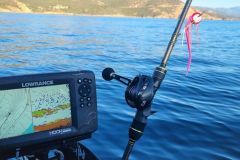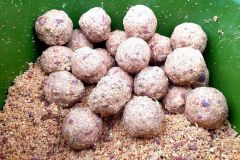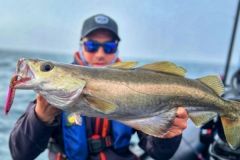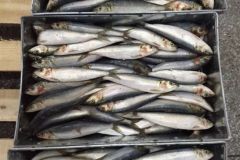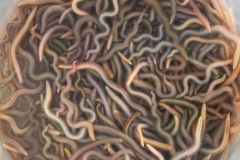What is priming?
Baiting allows you to bring fish to the place where you decide to set your lines. By creating a feeding frenzy in the fish, you can attract them from far away. To be effective, the bait must correspond to the food requirements of the fish you're after. It must also be able to adapt to the site, depending on the current and the distance at which you cast it. Baiting is always a plus that enhances the quality and results of fishing, provided it is competent and continually maintained. Some fishing techniques or the search for large marine predators rely entirely on the presence of quality groundbait.
The components
The effectiveness of a groundbait is not measured by its attractiveness alone, but by its components, which must enable it to be cast, to sink to the right depth, to retain fish for its nutritional value and to be visually identifiable. Components must therefore be chosen according to fishing conditions and the fish sought. Here's a table of those most commonly used at sea.

Preparation
Groundbait is made up of different components, some of which have a fairly long shelf life (sand, gravel, vacuum flours) and others which must be used immediately (shells, ground fish, worms). The former are mixed together and form the base of the groundbait, while the others are added as the groundbait is used. If the fresh components were all added from the start, the heat would certainly degrade them and make the primer less interesting, and the smell would probably bother you.
Primers are prepared in volumes of 2 or 3 liters, which is enough to prime for an hour. However, the composition of the bait may change during the fishing trip. So, if the fish are on the surface and not very excited, increase the quantity of sand so that food particles are rarer in the cloud. The difficulty of feeding increases competition between fish, with the first to catch a mouthful having the right to make the angler's acquaintance.
In another case, when the current increases with the tide, it may be necessary to weigh down your preparation with gravel or agglomerate it with sticky components such as flour, PV1, clay... This will enable the ball to pass through the layer of water quickly, without drifting too much under the pressure of the water. A good tip for bottom fishing is to prepare your balls in a 15-liter bucket and put it in the freezer, or in 5-kilo blocks which you can then put in a net. This block will give you around 4 hours' fishing time, while the others, kept in a cool box, will remain intact for around ten hours.
Position the boat before baiting
Even if you're counting on your groundbait to bring in the fish, it's not enough to stand in the first place you see to bait and catch fish. The logical choice is to position yourself where the currents won't carry the scent too far if you're fishing in open water (end of headland, estuaries, overhang of a break or shoal), or upstream of a fish holding (wreck, rocky area) for bottom fishing.
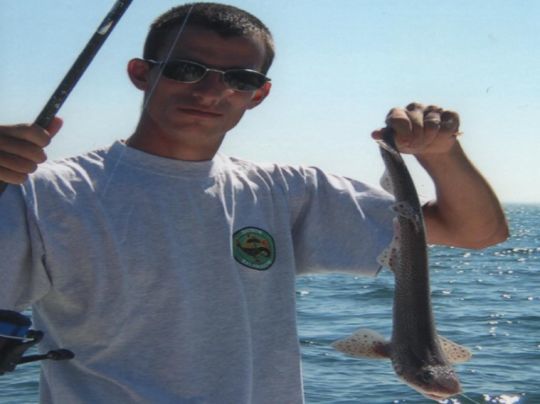
How to bait from a boat
This depends on the strength of the current and the type of fishing you do. If the current is steady to strong, you'll have no choice but to put your groundbait in a net or cage attached to a rope with ballast. If the current is flat to medium, you can still put your groundbait in a net, but it's a good idea to regularly throw a ball of your groundbait directly into the water.
If the aim of baiting is to concentrate the fish at depth, you need to make sure that it will hold in the current. Once again, if the depth is too great, you'll need to use a net. To fish between two waters, the groundbait alone (fish or compound base) will naturally evolve with the currents and bring the fish closer to the boat. Nothing could be simpler, in fact, provided you don't break the food chain.
Priming follow-up
Even if you don't record any bites, you'll still need to regularly relaunch the primer. This is known as recalling. The more diffuse the groundbait, and the more likely it is to be used for small fish or between two waters, the more frequent the recoil should be, generally every five minutes.
The heavier and stickier the groundbait, for serious fish, the more spaced out and irregular the interval between each ball can be, sometimes with a large amount of groundbait thrown in for shuffling. If a large shoal of fish is on the move, and the bites follow each other in quick succession, increase the cadence. At a certain stage, if there is too little food for the multitude of fish, they may leave the area.
When fishing for tuna with scramblers, you need to bait continuously, casting a sardine every 1 to 3 minutes, regardless of fish activity. Electrically powered sardine feeders are ideal for this type of fishing.




